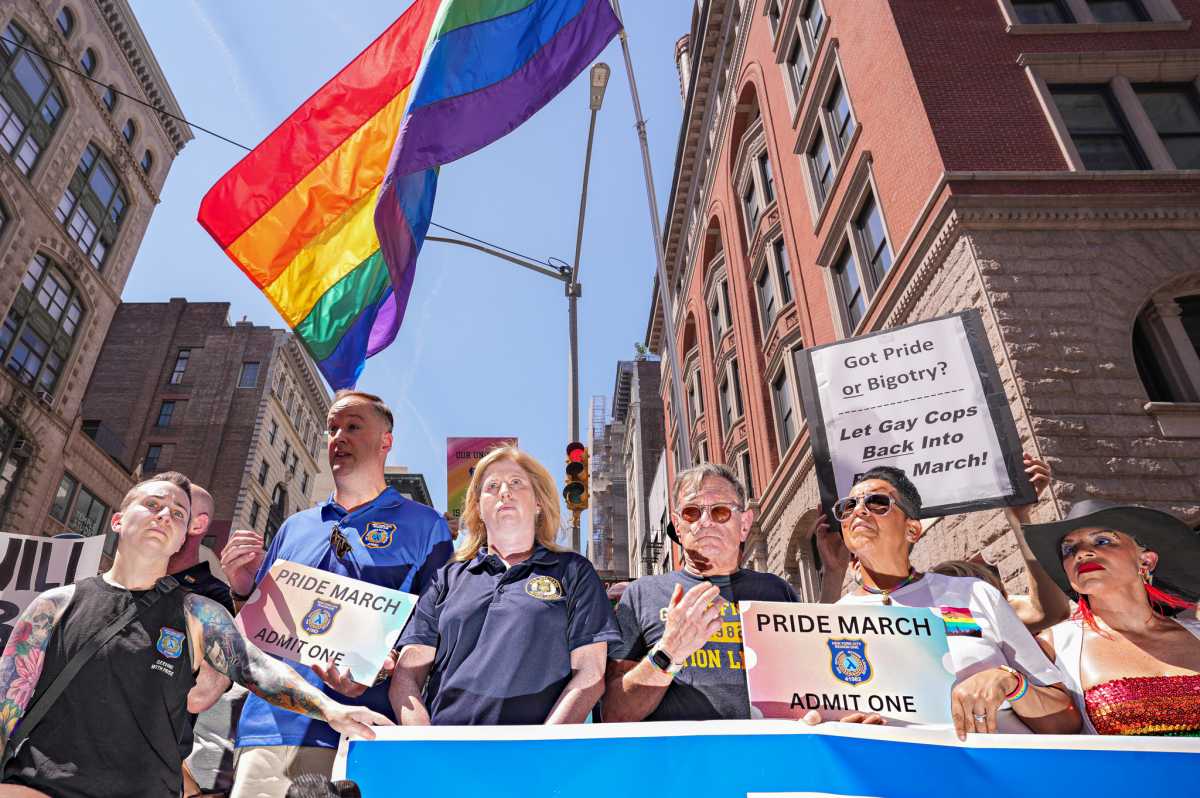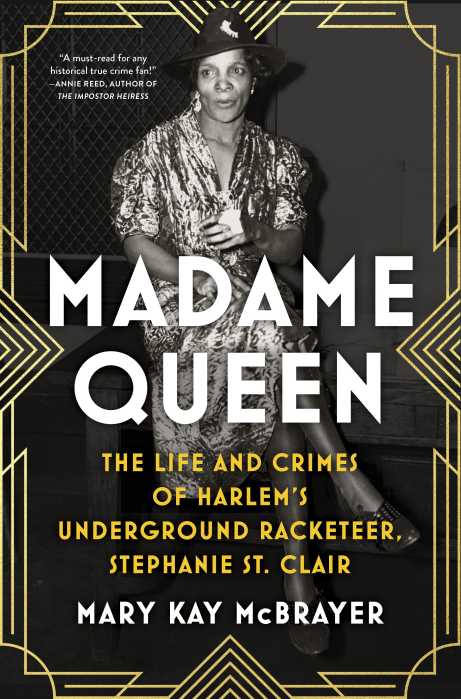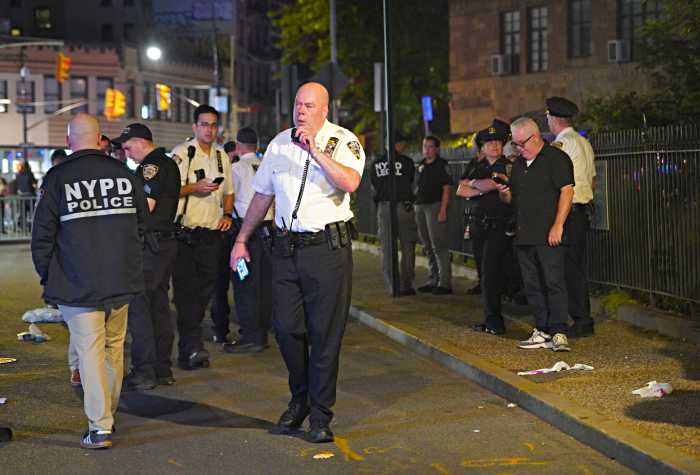May 18, 1981. That was the day of the first report about the emerging pattern of serious illness among gay men that later came to be known as AIDS. People writing about the epidemic are finally noting that first report, which I published in the New York Native, and starting to ask questions about it. In its recent feature on “The First Quarter Century of AIDS” in Newsweek, the magazine’s West Coast editor David Jefferson cites my Native reporting as the first story published, but only in the context of illustrating that “even the gay press got it wrong…”
Is his description accurate?
It would be easy for me to concede Jefferson’s point, but minimize my own culpability by blaming Native editor and publisher Charles Ortleb for choosing the headline “Disease Rumors Largely Unfounded,” thereby understating the seriousness of the developments I reported.
But I’m not sure that that’s what happened.
I no longer remember all the details with certainty, but I do acknowledge that my initial instincts were shaded by the risks I perceived in causing panic and also scapegoating with my reporting. Together with a host of officials from the federal Centers for Disease Control and Prevention, I was indicted—though not by name—by Randy Shilts in “And the Band Played On” for being too cautious, for not coming down harder on the community the way Larry Kramer did from Day One.
My indictment by Shilts, who did not begin his own AIDS reporting until 1982, was made by implication rather than by name because it was not in his interest—either in presenting himself as the gay journalist covering the epidemic or in making the case that the band that played on was not balanced by any thoughtful or concerned gay spokespersons—to call attention to my work.
You surely come away from that first story in the Native sensing my caution in weighing what conclusions could be drawn from the early cases of pneumocystis carini. That caution was reflected in the headline; the notion that I was trying to arouse a lot more concern at that moment but was prevented from doing so by Ortleb’s editorial hand is erroneous.
Charles Ortleb’s coverage of AIDS may have become purely paranoid by the time the Native folded in the late ‘90s, but in the earliest days of the epidemic, he was a strong guiding force for proactive and intensive investigation of the unfolding health crisis. Larry Kramer will verify that.
Following that first report in May, it was almost immediately clear that we were dealing with a public health emergency. The following month, the Native published my first feature article on the epidemic, “Cancer in The Gay Community,” which became part of both the opening and permanent displays of the Newseum, the Museum of Journalism and the Media in Arlington, Virginia.
Over the next year and a half, I published some 23 articles on AIDS, mostly in the Native, while much of both the mainstream and the gay press remained silent. At the insistence of the late Arthur Bell, the Village Voice commissioned a big feature by me—which I titled “The Most Important New Public Health Problem in the United States”—but it was rejected by Richard Goldstein and Karen Durbin as “not a Voice piece.” (Full disclosure: the report was doctorish and included no four-letter words.) The opening of that story read: “It hasn’t gone away. On the contrary. It has already claimed more lives than the combined tolls of Legionnaire’s Disease and Toxic Shock Syndrome.” The paragraph ended by quoting the CDC’s Dr. James Curran calling the emerging epidemic “the most important new public health problem in the United States.”
After the Voice bailed on the piece, it was run in the Native, though with a substitute title: “The Epidemic Continues.”
A consistent theme in my early AIDS reporting was that the public health emergency had to be taken seriously not only by the gay community but also by the mainstream society that had yet to give us our basic civil rights, greatly exacerbating the nexus of promiscuity, shame, and disease transmission.
My position emerged as essentially centrist—alerting the community to the seriousness of a health emergency while at the same time voicing wariness about sweeping public health responses that might further threaten civil liberties and drive sexually active gay men further underground, back into the closet. My centrism was attacked from all sides.
Among gay liberationists who valued above all else the emergence of a vibrant sexual culture—among whom I identified myself and a group of men I was eager to warn and protect—my posture was quickly located alongside and together with that of Larry Kramer, and as a doctor I was pilloried particularly for trying to re-medicalize and re-pathologize homosexuality. The victory over the illness model of gay sexuality was of course the most important victory of the liberation movement up to that time.
To Kramer, on the other hand, I was one of the men with whom he had founded Gay Men’s Health Crisis who was taking too cautious an approach to the urgent actions he believed needed to be taken. Kramer was right. I was far too concerned with protection of our civil liberties, with not losing the hard-earned sex positivity we had finally developed. I saw myself as an advocate of the Sexual Revolution—not Hugh Hefner’s but rather the great phenomena that sexologists have called The Birth Control Age, which included women’s rights, sex education, and freedom, tolerance, and understanding that extend to gay people, leatherfolk, and beyond.
When Kramer would say, “This Sexual Revolution will be the death of us,” he was talking about gay men having sex anywhere, anytime, anyplace, anyhow, as he put it in his play “The Normal Heart.” In my view, the Sexual Revolution meant, most immediately, securing our civil rights at the national level, together with the sanctioning of gay coupling—domestic partnerships, civil unions, and marriage—as “an essential aspect of the preventive medicine of AIDS and other STDS,” a position I fought for consistently.
Kramer wanted everyone to immediately just stop having sex, to just say no. I would not say that nor would I embrace other extremist positions. The whole business of then-Mayor Ed Koch being a “mass murderer,” was not how I saw it then or how I see it now. Shut down all the bathhouses. Sorry, I found that troubling then, and still do now.
But organizing, demonstrating, and lobbying needed to happen and whatever the mix of their motivations, Kramer and Shilts were there, doing just that.
The one goal that sustained me throughout my early reporting on AIDS was to tell the truth, no matter how impolitic, how untimely, how unpopular. My message was necessarily nuanced, even frustratingly dualistic. Now more than ever, I exhorted, we must not abandon our affirming sense about ourselves as gay men and about our sexuality as something unique and beautiful. At the same time, we needed to recognize that we were in the midst of a public health emergency that urgently demanded both caution and action.
gaycitynews.com

































